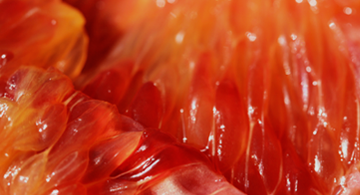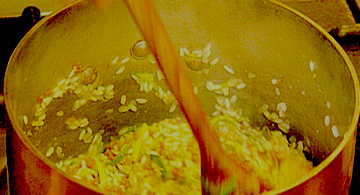Italian ragù is a revered traditional dish made in each of Italy's twenty regions. Ragù, sauce, red sauce, gravy, Sunday gravy, or whatever the family calls it, is a braised dish served as a first course and main course depending on its ingredients, cooking style, and region where it is made.
The most popular style of ragù is categorized as a sauce, similar to stew or chili in appearance and texture, and includes some form of tomatoes, whether fresh or canned, chopped, puréed into passàta, or reduced into tomato concentrate. This is what we are usually served in restaurants tossed with pasta or potato gnocchi, or glistening atop Italian cornmeal polenta. But there is so much more to choose from and make in your kitchen! Just about any main ingredient you love can become ragù. Whether it is meat, poultry, game, seafood, mushrooms, or vegetables, magic is at your fingertips once you know the best techniques for the style of ragù you want to make.
Ragù is versatile.
Ragù changes with the seasons…and how we look forward to it! Whether it is light pork and veal, succulent beef, hearty venison, or savory porcini mushrooms gathered from the woods, Italian families and restaurants embrace all. We plan special dinners with our friends, grab a fork and tuck in with gusto. Changing the type of ragù can change its presentation. Some ragù is stunning when tossed with delicate fresh egg pasta…you will remember it forever, it is such a dish of perfection. Other ragù comes alive when tossed with chewy dried pasta boiled to al dènte texture that makes it memorably satisfying. Yet other versions shine paired with smooth potato gnocchi or ladled in a bowl of hot steaming Italian cornmeal polenta. Think in advance how you want to serve it because it affects the choice of ragù, how it cooks and how long it simmers. For example, ragù served with tagliatelle pasta is different, and cooks differently, from ragù layered in baked lasagne. Certain types of ragù, especially Southern-style, are served with pasta as the first course, il primo piatto, followed by the ragù’s braised meat lovingly displayed on the family's platter and served as the main dish, il secondo piatto.
Ragù is easy and inexpensive to make.
Many ingredients for making ragù are probably in your kitchen right now. Carrots, celery, onion, garlic, canned plum tomatoes, butter, and extra-virgin olive oil provide the base for most ragùs and are standard staples around the world today. With roots in La Cucina Povera, the Cuisine of the Poor, ragù has strong traditional ties to the farmer, the butcher, and the frugal cook. Often small amounts of ingredients are sufficient to prepare these recipes, ideal for that single carrot, celery stalk, and onion leftover in your vegetable bin. It begins with quality ingredients and how they are prepared before adding them to the cooking pot. For the best tasting ragù, main ingredients are hand-chopped, coarsely ground, cut into large pieces, or left whole. It is rare to finely grind the main ingredient like grocery store ground meat.
Fat. Get used to it because to make delectable, plate-lickin' ragù, fat is required. Butter, sunflower oil, extra-virgin olive oil, well-marbled meats…all have their special place in the hierarchy when cooking ragù even if only in small quantities. Decades ago, lard or midollo or bone marrow, were favorites in making this dish taste richer. Begin by searing main ingredients in a deep pot over medium to high temperature sealing in their juices and enhancing their flavors. How long they are seared depends on the individual ingredients and personal preference, and indicates a regional style affecting color, aroma, texture, and taste. Cooks in some regions prefer minimal searing with lightweight fat while cooks in other regions love deeply browning their ingredients in hearty fat.
Accenting these main ingredients with the trio of carrots, celery, and onion, is common. Perhaps add pancetta, rigatino, or prosciutto crudo, maybe garlic and a fresh herb or two. These combine into il soffritto. Classic ragù simmers in a braising liquid mixture of wine, water, broth and/or stock. Often some form of tomatoes is included, although not every ragù style includes tomatoes. As the braising liquid reduces during cooking, it thickens and concentrates. The ingredients respond well to slowly cooking in moist heat. When all become fork-tender and rich-tasting surrounded by luscious sauce, you have made ragù. Once finished, ragù has soft texture, ideal for accompanying soft-textured pasta, gnocchi, or polenta, with balanced sweet, salty, and slightly sour flavors. Most ingredients inherently possess sweetness and saltiness. Wine and tomatoes contain both, and they contribute acidity, which tastes sour. Add garlic or herbs and their mild pungency infuses ragù. Occasionally, ingredients such as tomatoes with their seeds, and garlic, add a hint of bitterness, too. Make well-blended ragù balanced in flavor and texture.
Making ragù is one-pot cooking.
All you need is your favorite deep pot or Dutch oven.
Making classic ragù is the cook’s friend because it is one-pot cooking. Simply select a non-stick deep pot or Dutch oven with 2.5-quarts to 4-quarts (2.37 liters to 3.78 liters) capacity to make enough for 4 to 8 generous servings. I have a favorite one reserved for making ragù, an enameled cast-iron pot, that brings a smile every time I place it on the stove. Goodness is coming! Unlike those stories of ragù requiring all day to cook, in reality, it depends on the type of ragù. Yes, making some ragù requires 6 to 8 hours, especially Southern-style ragù. Applying non-traditional sous-vide methods extends the process to days! However, professional Italian chefs in Italy cook Northern-style ragù, and other quick-cooking ragù, in 1 to 3 hours, with wonderful results. Ragu simmers gently without fuss, needing only the occasional stir. Prepare it on your day off then enjoy it during the workweek. Planning a party? Ragu is a favorite party dish because most versions taste better when made 1 or 2 days in advance of serving allowing their flavors to blend harmoniously. Simply reheat and serve for an absolutely delicious meal.
Making ragù is a culinary art evolving with each generation of cooks.
Making ragù is a culinary art evolving with each generation of cooks and each wave of immigrants adding its own imprint. Ragù remains a source of pride, and for many Italian families, a well-guarded secret recipe for centuries. In this recipe collection, you will learn about a variety of ragù served in Italian homes and only in Italian restaurants in Italy. You have the opportunity to make them at home or add them to your catering and restaurant menus. Cooks put their heart and soul into making ragù; pretense is shunned and no fancy equipment is required. Respecting tradition, honoring the process of making ragù, and welcoming others to share in this heritage at your table, are unwritten integral components of every ragù recipe. Cooks who love ragù understand the experience extends far beyond making the dish. They know it becomes the total state of being and focus as the cook and dish meld into one. Making ragù is the zen of Italian cooking.
Eating ragù extends this state of bliss. Ragù is a fine example of Italian comfort food. It is symbolic. Serving ragù as part of a meal celebrates a marriage, a national or religious holiday, or special event in someone’s life. Warm memories cosset us as reminders of younger days when our grandmother, la nonna, was cooking at the stove. How those enticing aromas beckoned all! A staple of the Sunday main meal for generations, it brings friends and families together in the kitchen and at the table. An invitation to share a meal of homemade ragù is one of the warmest offers of hospitality you can receive from an Italian family.
Ragù is part of culinary cult status.
Cooks and recipe collectors always search for new versions of this famous Italian dish. Safeguarding their recipes, they exchange or give them as gifts. As this website section develops over time, I hope you discover some new recipes to add to your collection. With today’s penchant for verbing, changing nouns into verbs, here is my Italian-cuisine inspired neologism: How do you ragù?©







